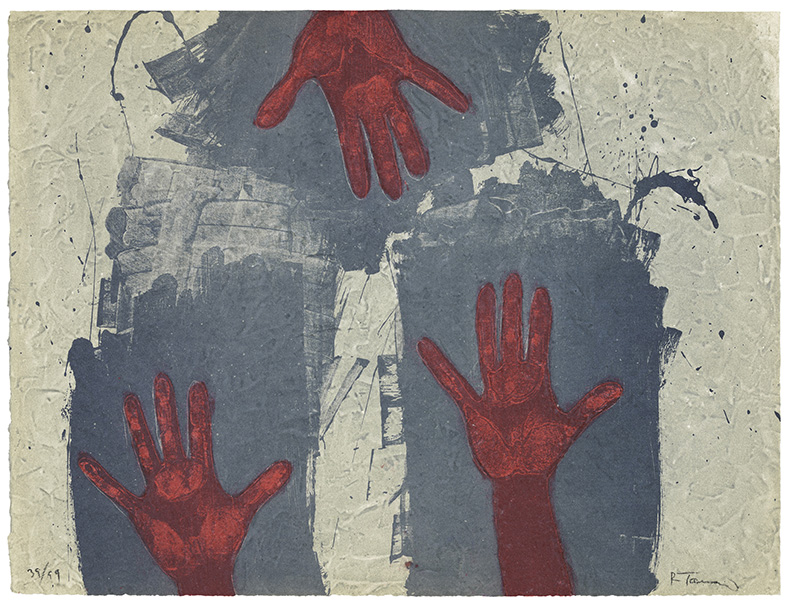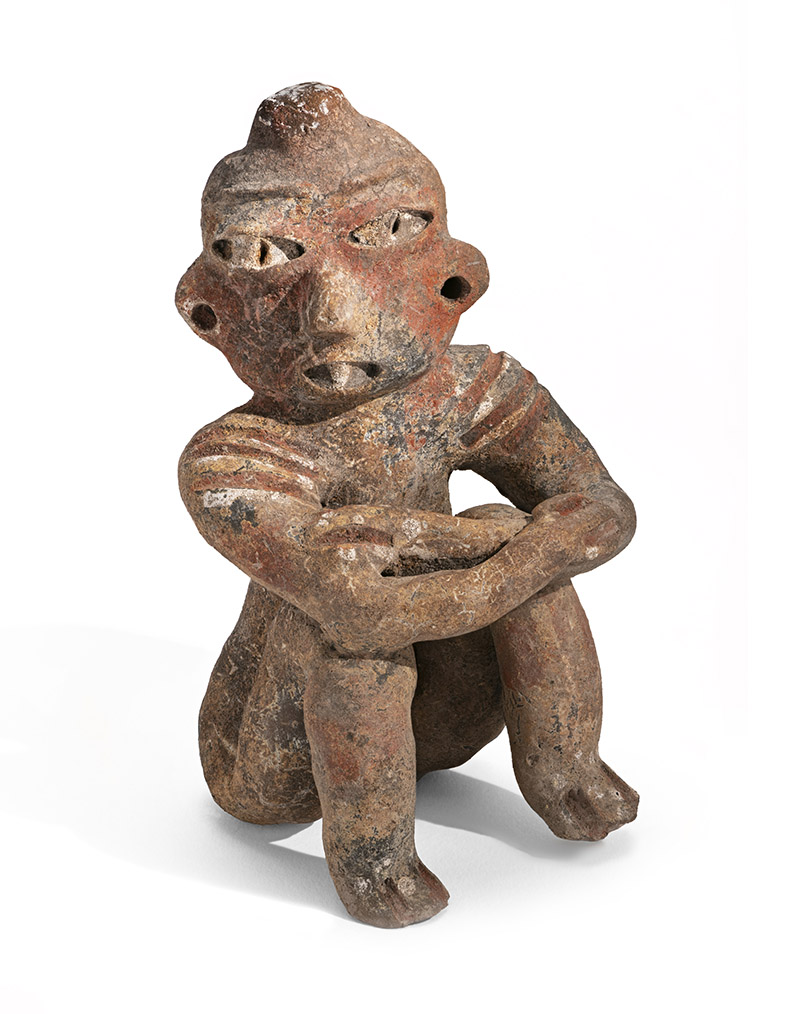Rufino Tamayo (1899–1991) is considered one of the great 20th-century Mexican artists alongside figures including Diego Rivera and José Clemente Orozco. His work, however, was coloured by his Zapotec heritage, which made him suspicious of the patriotism that characterised the work of many of his Mexican peers. He drew on influences from all over the world: the art of his compatriots; pre-colonial artefacts, many of which he had access to through his position as head of the department of ethnographic drawing at the National Museum of Archaeology, History, and Ethnography in Mexico City; as well as contemporary European and American schools of art such as cubism, Surrealism and, in the latter part of his career, Abstract Expressionism. He is best known for his murals, but this exhibition at the Amon Carter Museum of American Art in Fort Worth – which displays work held by the Los Angeles Country Museum of Art – focuses mainly on his prints, with some of his watercolours also on display, as well as examples of Mesoamerican ceramics whose style had a profound influence on Tamayo’s art (24 November–20 April 2025).
Find out more from the Amon Carter Museum’s website.
Preview below | View Apollo’s Art Diary
Man with Tall Hat (c.1930), Rufino Tamayo. Photo: © Museum Associates/LACMA; © 2024 Tamayo Heirs/Mexico/Artists Rights Society (ARS), New York

Hands on Blue Background (1979), Rufino Tamayo. Photo: © Museum Associates/LACMA; © 2024 Tamayo Heirs/Mexico/Artists Rights Society (ARS), New York

The Personage (1975), Rufino Tamayo. Photo: © Museum Associates/LACMA; © 2024 Tamayo Heirs/Mexico/Artists Rights Society (ARS), New York

Seated Male with Shoulder Scarification (c.1200–900 BC), Mexico, possibly Tlatilco. Photo: © Museum Associates/LACMA




